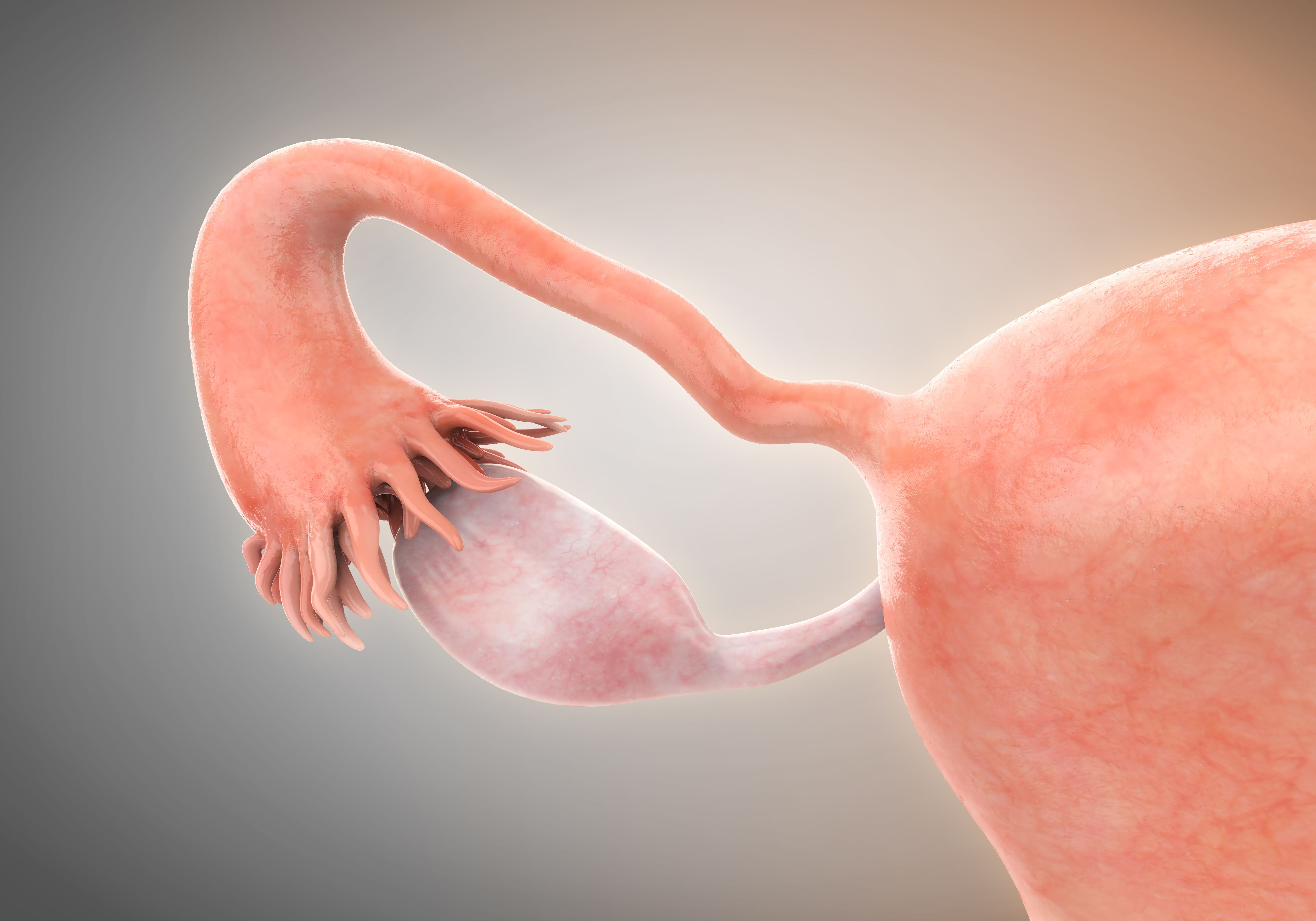Lymphadenectomy Does Not Improve PFS/OS in Advanced Ovarian Cancer
The CARACO study shows that adding retroperitoneal lymphadenectomy to cytoreductive surgery did not improve survival in advanced ovarian cancer.
“[The] CARACO trial is the only prospectively randomized trial asking the question of the impact of systematic lymphadenectomy in case of neoadjuvant therapy,” according to Jean-Marc Classe, MD, PhD.

Progression-free survival (PFS) and overall survival (OS) were not improved when retroperitoneal lymphadenectomy was added to cytoreductive surgery during primary surgery or after neoadjuvant chemotherapy for patients with advanced ovarian cancer, according to results from the phase 3 CARACO trial (NCT01218490) presented in a press briefing at the 2024 American Society of Clinical Oncology (ASCO) Annual Meeting.
The median PFS for those who did not receive retroperitoneal lymphadenectomy was 14.8 months vs 18.6 months for those who did (HR, 0.96; 95% CI, 0.77-1.20; P = .712). The median OS was 48.9 months for those who did not receive retroperitoneal lymphadenectomy vs 58.8 months for those who did (HR, 0.92; 95% CI, 0.72-1.17; P = .489).
“[The] CARACO trial is the only prospectively randomized trial asking the question of the impact of systematic lymphadenectomy in case of neoadjuvant therapy,” Jean-Marc Classe, MD, PhD, head of the oncological surgery department at the Western Cancer Institute, said during the presentation.
In multicenter, phase 3 CARACO trial, patients were randomly assigned 1:1 to receive either surgery with lymphadenectomy or without lymphadenectomy. Patients were included if they were older than 18 years, had epithelial ovarian cancer, and Thoraco Abdomino pelvic CT or MRI scan with no nodes being more than 2 cm or more. Additionally, patients needed to have FIGO stage III to IVA disease or feasible optimal primary surgery to enroll. If optimal primary surgery was not feasible, interval surgery after neoadjuvant chemotherapy was required for enrollment.
Patients were excluded from treatment if they had nonepithelial carcinoma/borderline carcinoma, previous retroperitoneal lymph node resection, and Thoraco Abdomino pelvic CT or MRI scan with nodes of more than 2 cm or more before any treatment. Residual tumors of more than 1 cm and complete surgery not being feasible after 3 of 4 cycles with neoadjuvant chemotherapy were also grounds for exclusion from the trial.
The data cutoff was January 31, 2023. A total of 450 patients were enrolled, 379 were randomly assigned, and 314 events were observed. Of note, 22 events were missing from the final analysis.
The primary end point was PFS. To achieve this end point, an 80% power at 1-sided alpha = 5% was needed to detect an HR of 0.76 with retroperitoneal lymphadenectomy vs without retroperitoneal lymphadenectomy. Secondary end points included OS, safety, surgical outcome, and quality of life.
Between both arms, the baseline characteristics included a median age of 65 years vs 64 years, 86.0% vs 87.6% having serious or endometrioid carcinoma, and 85.6% vs 88.3% having surgery that was not residual. The median duration of surgery was 240 minutes vs 300 minutes, and 26% vs 21% had primary surgery, and 74% vs 79% had interval surgery.
Among patients who received retroperitoneal lymphadenectomy, the median number of resected lymph nodes was 28 (IQR, 19-36). Additionally, 43% of patients had 1 or more involved lymph nodes.
Within 30 days of surgery, 29.7% of patients in the non-retroperitoneal lymphadenectomy arm had a transfusion or blood loss compared with 39.3% of patients who had the retroperitoneal lymphadenectomy (P = .049). Reintervention was noted in 3.1% vs 8.3% of patients (P = .031), and urinary injury was also highlighted in 0.0% vs 3.8% (P = .006). A digestive fistula was observed in 1.1% vs 2.2%, a pulmonary embolism in 3.7% vs 1.6%, and death in 0.5% vs 1.1%.
Reference
Classe JM, Campion L, Lecuru F. et al. Omission of lymphadenectomy in patients with advanced epithelial ovarian cancer treated with primary or interval cytoreductive surgery after neoadjuvant chemotherapy: The CARACO phase III randomized trial. J Clin Oncol. 2024;(suppl 17):LBA5505.
Gedatolisib Combo With/Without Palbociclib May Be New SOC in PIK3CA Wild-Type Breast Cancer
December 21st 2025“VIKTORIA-1 is the first study to demonstrate a statistically significant and clinically meaningful improvement in PFS with PAM inhibition in patients with PIK3CA wild-type disease, all of whom received prior CDK4/6 inhibition,” said Barbara Pistilli, MD.